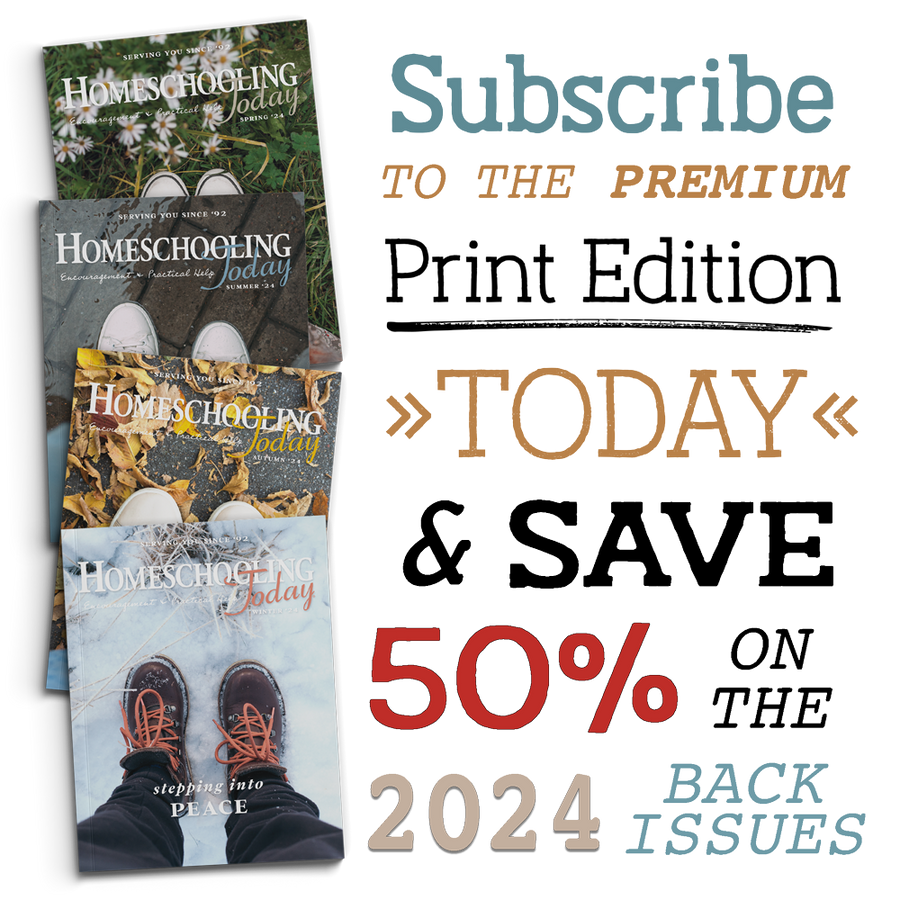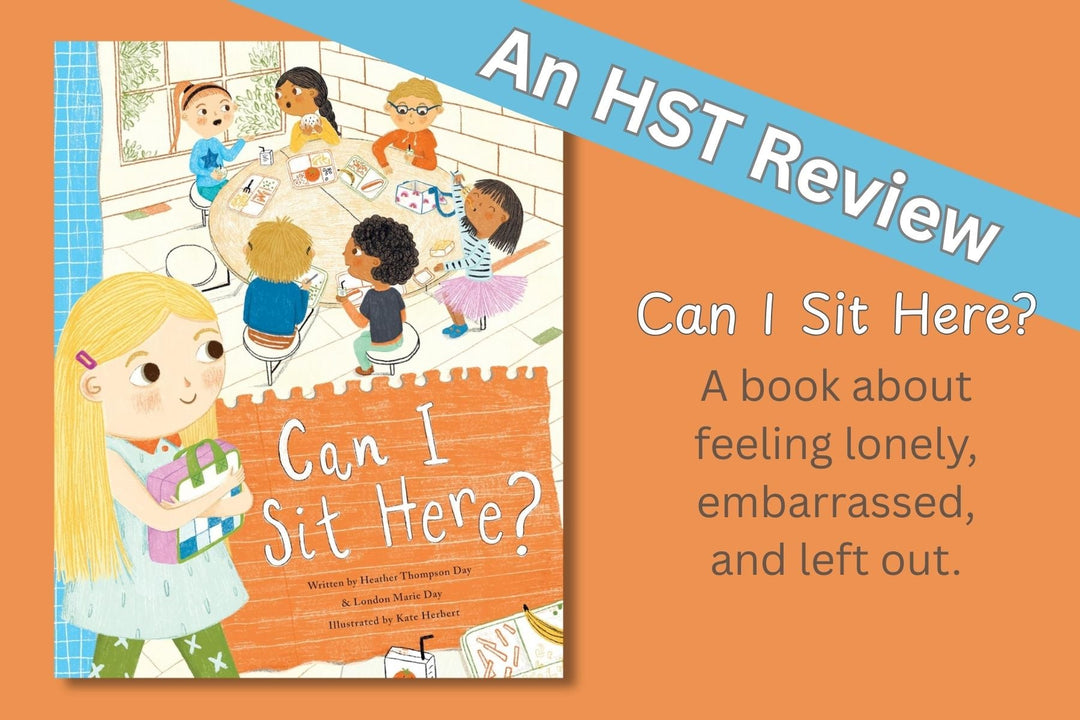Winter Days In The Big Woods Unit Study

Who hasn't read the Little House series by Laura Ingalls Wilder? They are often the first novels children read. These books have inspired a picture book series called My First Little House Books. This series puts the timeless characters of the Little House books into the hands of young pre-readers. The illustrations, inspired by the original Garth Williams ink drawings in the infamous chapter books, complement the abbreviated text.
The original autobiographical Little House books tell the stories of Laura Ingalls Wilder as a young pioneer girl traveling across the Midwest with her family. In Winter Days in the Big Woods (adapted from Little House in the Big Woods), Laura spends the winter in their log cabin in the woods of Wisconsin. Together, the family gathers potatoes, carrots, beets, turnips, cabbages, and pumpkins from the garden, storing the vegetables for the coming winter.
When winter comes, Laura and Mary draw frost pictures on the cabin window with Ma's thimble. They also churn butter, cut paper dolls, and make bread. Night finds the family singing to Pa's fiddle tunes. Young readers are invited into the adventures of this pioneer family building a homestead in the Midwest.
Turning the Ingalls adventures into a fun homeschool unit study is easy. Here are some fun ideas that go along with both Winter Days In The Big Woods and Little House In The Big Woods.
 Locate the Midwest
The Midwest states are Illinois, Indiana, Iowa, Kansas, Michigan, Minnesota, Missouri, Nebraska, North Dakota, Ohio, South Dakota, and Wisconsin. This book is set in Wisconsin. Locate Wisconsin and the other Midwest states on a United States map.
Listen to Fiddle Tunes
Pa played his fiddle in the evenings. Ma and the girls sang while Pa kept time with his foot. Listen to fiddle tunes online. Tap out the beat with your foot.
A luthier is a person who makes violins and other stringed instruments. One of the most notable luthiers in the world was Antonio Stradivari. His instruments are rare and highly-valued today. Visit a violin studio or talk with a luthier in your area.
Some stringed instruments are plucked or strummed. Others are bowed. Strummed instruments include guitars, banjos, and mandolins. Violins, violas, cellos, double basses, and fiddles are bowed. Attend an orchestral event in your community and identify the instruments.
Write on Windows
In some areas of the United States, frost or condensation settles on house and car windows. When temperatures fall below freezing, frost—a layer of small ice crystals—forms on grass and other surfaces. Condensation occurs when water vapor (gas) changes to water droplets (liquid) on a surface, often a window when the inside temperature is warmer than the window surface. Draw pictures or spell words in the frost or condensation on a window. If neither is available, pour salt crystals in a flat jelly roll pan and draw or spell in the crystals.
Learn Days of the Week
Learn the days of the week in sequential order. As Ma and the girls worked Ma would chant:
“Wash on Monday,
Iron on Tuesday,
Mend on Wednesday,
Churn on Thursday,
Clean on Friday,
Bake on Saturday,
Rest on Sunday.”
Write the days of the week on a white board. Say the words. For handwriting practice, children can copy on paper. A parent can write each day on a 3 x 5 card. Mix up the cards and then have the child put the cards in the proper sequence.
Gather Vegetables
Ma and the girls gathered vegetables. If you have a garden, harvest together. If not, visit the local produce market and select vegetables to make a yummy vegetable soup. Consider potatoes, cabbage, tomatoes, carrots, and onions. Differentiate fruits from vegetables. Read Vegetables We Eat, by Gail Gibbons, (Holiday House, 2007) or Growing Vegetable Soup, by Lois Ehlert, (Harcourt, 1987).
Bake Bread and Make Butter
Saturday was baking day in the Ingalls' home. Make bread dough or purchase frozen bread dough from the grocery store. After the dough has risen, punch down and shape into a hearty loaf. Consider making bread letters to reinforce spelling your child’s name. Set the shaped dough in a warm area to rise. After one hour, observe. How is the dough different? Bake according to dough instructions.
Laura Ingalls made bread, but she also helped to churn butter. Churning in the Ingalls' home was done on Thursday. Define churn. Find the illustration of the butter churn in the book. To make your own butter, place heavy whipping cream in a baby food or small canning jar. Shake until butter forms. Add sea salt to desired taste. Spread on bread or crackers.
Share Cookies
Occasionally the Ingalls made cookies. Make a batch of your family’s favorite cookies and share a plate with a neighbor or friend.
Cut Paper Dolls
Ma cut paper dolls for Mary and Laura. Find a paper doll pattern online. Examples can be found at this site http://www.auntannie.com/FridayFun/DollChain/. Add faces, fabric or felt clothes. Use a shoebox to create a house for the paper dolls.
Make a Rag Doll
Young pioneer girls did not have money to buy new dolls. Instead, they used materials and resources they had available—perhaps corn husks, scrap fabric, or wool—to make their own dolls. Make a doll with your family. Handkerchief doll instructions can be found at http://www.hcsv.org/education/crafts/make-a-handkerchief-doll/
My First Little House Books are a wonderful stepping stone to Laura Ingalls Wilder’s chapter books. In fact, after introducing My First Little House series to your child, you may find the chapter books to be the next choice for family read aloud time. Happy pioneering!
----------------------------------------------------
Cheryl Bastian and her husband Mike have seven children and have been homeschooling since 1993, Cheryl organized and led a Central Florida support group, mentors current leaders, and remains active in the homeschooling community. As an author and speaker, Cheryl encourages parents to embrace the education and training of their children. Her books and resources are available at www.cherylbastian.com.
-----------------------------------------------------
This article was originally published in the Homeschooling Today Magazine 2015 winter issue. Get more quality, relevant articles like these delivered to your door or to your inbox with your subscription to homeschooling today!
Locate the Midwest
The Midwest states are Illinois, Indiana, Iowa, Kansas, Michigan, Minnesota, Missouri, Nebraska, North Dakota, Ohio, South Dakota, and Wisconsin. This book is set in Wisconsin. Locate Wisconsin and the other Midwest states on a United States map.
Listen to Fiddle Tunes
Pa played his fiddle in the evenings. Ma and the girls sang while Pa kept time with his foot. Listen to fiddle tunes online. Tap out the beat with your foot.
A luthier is a person who makes violins and other stringed instruments. One of the most notable luthiers in the world was Antonio Stradivari. His instruments are rare and highly-valued today. Visit a violin studio or talk with a luthier in your area.
Some stringed instruments are plucked or strummed. Others are bowed. Strummed instruments include guitars, banjos, and mandolins. Violins, violas, cellos, double basses, and fiddles are bowed. Attend an orchestral event in your community and identify the instruments.
Write on Windows
In some areas of the United States, frost or condensation settles on house and car windows. When temperatures fall below freezing, frost—a layer of small ice crystals—forms on grass and other surfaces. Condensation occurs when water vapor (gas) changes to water droplets (liquid) on a surface, often a window when the inside temperature is warmer than the window surface. Draw pictures or spell words in the frost or condensation on a window. If neither is available, pour salt crystals in a flat jelly roll pan and draw or spell in the crystals.
Learn Days of the Week
Learn the days of the week in sequential order. As Ma and the girls worked Ma would chant:
“Wash on Monday,
Iron on Tuesday,
Mend on Wednesday,
Churn on Thursday,
Clean on Friday,
Bake on Saturday,
Rest on Sunday.”
Write the days of the week on a white board. Say the words. For handwriting practice, children can copy on paper. A parent can write each day on a 3 x 5 card. Mix up the cards and then have the child put the cards in the proper sequence.
Gather Vegetables
Ma and the girls gathered vegetables. If you have a garden, harvest together. If not, visit the local produce market and select vegetables to make a yummy vegetable soup. Consider potatoes, cabbage, tomatoes, carrots, and onions. Differentiate fruits from vegetables. Read Vegetables We Eat, by Gail Gibbons, (Holiday House, 2007) or Growing Vegetable Soup, by Lois Ehlert, (Harcourt, 1987).
Bake Bread and Make Butter
Saturday was baking day in the Ingalls' home. Make bread dough or purchase frozen bread dough from the grocery store. After the dough has risen, punch down and shape into a hearty loaf. Consider making bread letters to reinforce spelling your child’s name. Set the shaped dough in a warm area to rise. After one hour, observe. How is the dough different? Bake according to dough instructions.
Laura Ingalls made bread, but she also helped to churn butter. Churning in the Ingalls' home was done on Thursday. Define churn. Find the illustration of the butter churn in the book. To make your own butter, place heavy whipping cream in a baby food or small canning jar. Shake until butter forms. Add sea salt to desired taste. Spread on bread or crackers.
Share Cookies
Occasionally the Ingalls made cookies. Make a batch of your family’s favorite cookies and share a plate with a neighbor or friend.
Cut Paper Dolls
Ma cut paper dolls for Mary and Laura. Find a paper doll pattern online. Examples can be found at this site http://www.auntannie.com/FridayFun/DollChain/. Add faces, fabric or felt clothes. Use a shoebox to create a house for the paper dolls.
Make a Rag Doll
Young pioneer girls did not have money to buy new dolls. Instead, they used materials and resources they had available—perhaps corn husks, scrap fabric, or wool—to make their own dolls. Make a doll with your family. Handkerchief doll instructions can be found at http://www.hcsv.org/education/crafts/make-a-handkerchief-doll/
My First Little House Books are a wonderful stepping stone to Laura Ingalls Wilder’s chapter books. In fact, after introducing My First Little House series to your child, you may find the chapter books to be the next choice for family read aloud time. Happy pioneering!
----------------------------------------------------
Cheryl Bastian and her husband Mike have seven children and have been homeschooling since 1993, Cheryl organized and led a Central Florida support group, mentors current leaders, and remains active in the homeschooling community. As an author and speaker, Cheryl encourages parents to embrace the education and training of their children. Her books and resources are available at www.cherylbastian.com.
-----------------------------------------------------
This article was originally published in the Homeschooling Today Magazine 2015 winter issue. Get more quality, relevant articles like these delivered to your door or to your inbox with your subscription to homeschooling today!
 Locate the Midwest
The Midwest states are Illinois, Indiana, Iowa, Kansas, Michigan, Minnesota, Missouri, Nebraska, North Dakota, Ohio, South Dakota, and Wisconsin. This book is set in Wisconsin. Locate Wisconsin and the other Midwest states on a United States map.
Listen to Fiddle Tunes
Pa played his fiddle in the evenings. Ma and the girls sang while Pa kept time with his foot. Listen to fiddle tunes online. Tap out the beat with your foot.
A luthier is a person who makes violins and other stringed instruments. One of the most notable luthiers in the world was Antonio Stradivari. His instruments are rare and highly-valued today. Visit a violin studio or talk with a luthier in your area.
Some stringed instruments are plucked or strummed. Others are bowed. Strummed instruments include guitars, banjos, and mandolins. Violins, violas, cellos, double basses, and fiddles are bowed. Attend an orchestral event in your community and identify the instruments.
Write on Windows
In some areas of the United States, frost or condensation settles on house and car windows. When temperatures fall below freezing, frost—a layer of small ice crystals—forms on grass and other surfaces. Condensation occurs when water vapor (gas) changes to water droplets (liquid) on a surface, often a window when the inside temperature is warmer than the window surface. Draw pictures or spell words in the frost or condensation on a window. If neither is available, pour salt crystals in a flat jelly roll pan and draw or spell in the crystals.
Learn Days of the Week
Learn the days of the week in sequential order. As Ma and the girls worked Ma would chant:
“Wash on Monday,
Iron on Tuesday,
Mend on Wednesday,
Churn on Thursday,
Clean on Friday,
Bake on Saturday,
Rest on Sunday.”
Write the days of the week on a white board. Say the words. For handwriting practice, children can copy on paper. A parent can write each day on a 3 x 5 card. Mix up the cards and then have the child put the cards in the proper sequence.
Gather Vegetables
Ma and the girls gathered vegetables. If you have a garden, harvest together. If not, visit the local produce market and select vegetables to make a yummy vegetable soup. Consider potatoes, cabbage, tomatoes, carrots, and onions. Differentiate fruits from vegetables. Read Vegetables We Eat, by Gail Gibbons, (Holiday House, 2007) or Growing Vegetable Soup, by Lois Ehlert, (Harcourt, 1987).
Bake Bread and Make Butter
Saturday was baking day in the Ingalls' home. Make bread dough or purchase frozen bread dough from the grocery store. After the dough has risen, punch down and shape into a hearty loaf. Consider making bread letters to reinforce spelling your child’s name. Set the shaped dough in a warm area to rise. After one hour, observe. How is the dough different? Bake according to dough instructions.
Laura Ingalls made bread, but she also helped to churn butter. Churning in the Ingalls' home was done on Thursday. Define churn. Find the illustration of the butter churn in the book. To make your own butter, place heavy whipping cream in a baby food or small canning jar. Shake until butter forms. Add sea salt to desired taste. Spread on bread or crackers.
Share Cookies
Occasionally the Ingalls made cookies. Make a batch of your family’s favorite cookies and share a plate with a neighbor or friend.
Cut Paper Dolls
Ma cut paper dolls for Mary and Laura. Find a paper doll pattern online. Examples can be found at this site http://www.auntannie.com/FridayFun/DollChain/. Add faces, fabric or felt clothes. Use a shoebox to create a house for the paper dolls.
Make a Rag Doll
Young pioneer girls did not have money to buy new dolls. Instead, they used materials and resources they had available—perhaps corn husks, scrap fabric, or wool—to make their own dolls. Make a doll with your family. Handkerchief doll instructions can be found at http://www.hcsv.org/education/crafts/make-a-handkerchief-doll/
My First Little House Books are a wonderful stepping stone to Laura Ingalls Wilder’s chapter books. In fact, after introducing My First Little House series to your child, you may find the chapter books to be the next choice for family read aloud time. Happy pioneering!
----------------------------------------------------
Cheryl Bastian and her husband Mike have seven children and have been homeschooling since 1993, Cheryl organized and led a Central Florida support group, mentors current leaders, and remains active in the homeschooling community. As an author and speaker, Cheryl encourages parents to embrace the education and training of their children. Her books and resources are available at www.cherylbastian.com.
-----------------------------------------------------
This article was originally published in the Homeschooling Today Magazine 2015 winter issue. Get more quality, relevant articles like these delivered to your door or to your inbox with your subscription to homeschooling today!
Locate the Midwest
The Midwest states are Illinois, Indiana, Iowa, Kansas, Michigan, Minnesota, Missouri, Nebraska, North Dakota, Ohio, South Dakota, and Wisconsin. This book is set in Wisconsin. Locate Wisconsin and the other Midwest states on a United States map.
Listen to Fiddle Tunes
Pa played his fiddle in the evenings. Ma and the girls sang while Pa kept time with his foot. Listen to fiddle tunes online. Tap out the beat with your foot.
A luthier is a person who makes violins and other stringed instruments. One of the most notable luthiers in the world was Antonio Stradivari. His instruments are rare and highly-valued today. Visit a violin studio or talk with a luthier in your area.
Some stringed instruments are plucked or strummed. Others are bowed. Strummed instruments include guitars, banjos, and mandolins. Violins, violas, cellos, double basses, and fiddles are bowed. Attend an orchestral event in your community and identify the instruments.
Write on Windows
In some areas of the United States, frost or condensation settles on house and car windows. When temperatures fall below freezing, frost—a layer of small ice crystals—forms on grass and other surfaces. Condensation occurs when water vapor (gas) changes to water droplets (liquid) on a surface, often a window when the inside temperature is warmer than the window surface. Draw pictures or spell words in the frost or condensation on a window. If neither is available, pour salt crystals in a flat jelly roll pan and draw or spell in the crystals.
Learn Days of the Week
Learn the days of the week in sequential order. As Ma and the girls worked Ma would chant:
“Wash on Monday,
Iron on Tuesday,
Mend on Wednesday,
Churn on Thursday,
Clean on Friday,
Bake on Saturday,
Rest on Sunday.”
Write the days of the week on a white board. Say the words. For handwriting practice, children can copy on paper. A parent can write each day on a 3 x 5 card. Mix up the cards and then have the child put the cards in the proper sequence.
Gather Vegetables
Ma and the girls gathered vegetables. If you have a garden, harvest together. If not, visit the local produce market and select vegetables to make a yummy vegetable soup. Consider potatoes, cabbage, tomatoes, carrots, and onions. Differentiate fruits from vegetables. Read Vegetables We Eat, by Gail Gibbons, (Holiday House, 2007) or Growing Vegetable Soup, by Lois Ehlert, (Harcourt, 1987).
Bake Bread and Make Butter
Saturday was baking day in the Ingalls' home. Make bread dough or purchase frozen bread dough from the grocery store. After the dough has risen, punch down and shape into a hearty loaf. Consider making bread letters to reinforce spelling your child’s name. Set the shaped dough in a warm area to rise. After one hour, observe. How is the dough different? Bake according to dough instructions.
Laura Ingalls made bread, but she also helped to churn butter. Churning in the Ingalls' home was done on Thursday. Define churn. Find the illustration of the butter churn in the book. To make your own butter, place heavy whipping cream in a baby food or small canning jar. Shake until butter forms. Add sea salt to desired taste. Spread on bread or crackers.
Share Cookies
Occasionally the Ingalls made cookies. Make a batch of your family’s favorite cookies and share a plate with a neighbor or friend.
Cut Paper Dolls
Ma cut paper dolls for Mary and Laura. Find a paper doll pattern online. Examples can be found at this site http://www.auntannie.com/FridayFun/DollChain/. Add faces, fabric or felt clothes. Use a shoebox to create a house for the paper dolls.
Make a Rag Doll
Young pioneer girls did not have money to buy new dolls. Instead, they used materials and resources they had available—perhaps corn husks, scrap fabric, or wool—to make their own dolls. Make a doll with your family. Handkerchief doll instructions can be found at http://www.hcsv.org/education/crafts/make-a-handkerchief-doll/
My First Little House Books are a wonderful stepping stone to Laura Ingalls Wilder’s chapter books. In fact, after introducing My First Little House series to your child, you may find the chapter books to be the next choice for family read aloud time. Happy pioneering!
----------------------------------------------------
Cheryl Bastian and her husband Mike have seven children and have been homeschooling since 1993, Cheryl organized and led a Central Florida support group, mentors current leaders, and remains active in the homeschooling community. As an author and speaker, Cheryl encourages parents to embrace the education and training of their children. Her books and resources are available at www.cherylbastian.com.
-----------------------------------------------------
This article was originally published in the Homeschooling Today Magazine 2015 winter issue. Get more quality, relevant articles like these delivered to your door or to your inbox with your subscription to homeschooling today!











